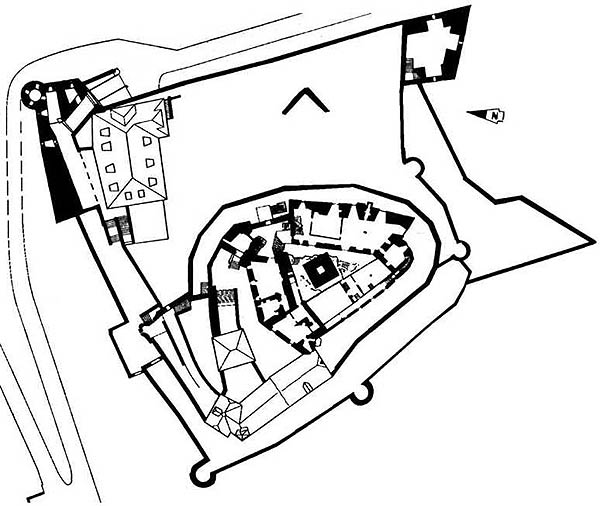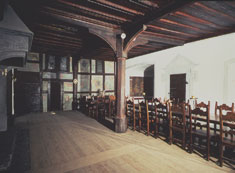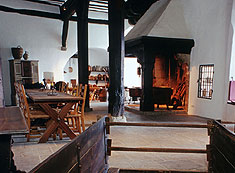|
|
The never completely demolished
Marksburg remains to be the best preserved motte Castle in the whole of
the middle Rhine Valley. It is an impressive pristine example of the
castles built in the late middle ages. The outline of the wall of the crux
of the castle, built at the beginning of the 13th century resembles the
shape of a triangle.
In 1708 and 1934 the great
Romanesque Hall (“Palas”), which is situated facing the north
side, thus facing the tributary Valley and enemy lines, was
intensively restored.
|
The
slender square-shaped keep, built in 1239 is situated on the
apex of the rock in the centre of the courtyard. Originally the 22m
tall structure ended with a crenellated barrage platform.
Only a few years later the characteristic Butter Vat Tower
(“Butterfassturm”) was constructed on the top, the total height of
the donjon now adding up to 39m. |
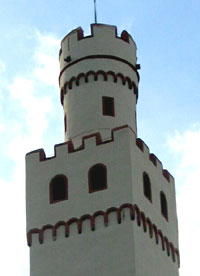 |
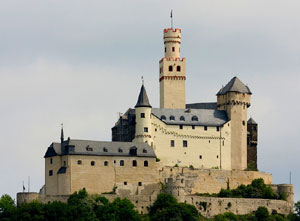 |
In 1372 the vulnerable southern
tip was reinforced by a polygonal-shaped barricade. It was named
Chapel Tower (“Kapellenturm”) as it embodies the castles
chapel.
The Romanesque perimeter walls are well distinguishable from the
river valley side, although being overhauled by the construction of
the
Rhine-Wing in 1706. |
Approximately in 1435 an additional
gothic Great Hall (“Palas”) reinforced with a shield wall, was erected on
the eastern side of the premises. Originally a 6 x 24m
representation hall was found in the basement and on the first
floor. By the 16th century a
kitchen was built in the basement, which is still found there
today.
| |
|
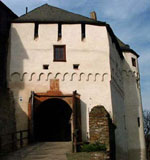 |
The outer defensive fortification
was constructed or expanded in various phases, so that one has to
pass through four gates in total to enter the castle.
By 1300 the castle was enclosed by an oval-shaped inner ward. Toward
the end of the 14th century the construction of the
northern and eastern outer bailey (“Zwinger”) was completed. At the
beginning of the 15th century the defensive fortification
was reinforced by a
drawbridge as well as the construction of a half tower
(“Schalenturm”) and an outer bailey facing the Rhine. |
The Marksburg is also an excellent
example of an attempt to extend a mediaeval castle into a fortress. Thus
explaining the construction of the
Great Battery (“Große Batterie”) located just above the smithy and
overlooking the Rhine. Eventually towards the end of the 30 Year War
around 1711, the corner Bastion and the
Small Battery (“Kleine Batterie”) were completed.
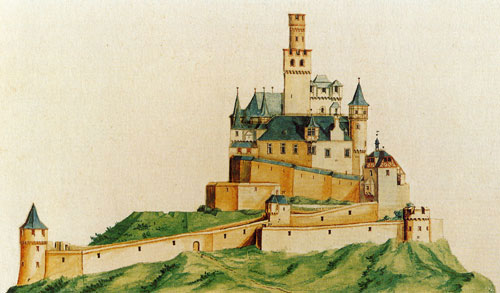
The documentations of the castle done by Wilhelm Dilich (see above)
show the condition of the building in 1607/08.They are of particular
importance regarding the architectural history and the history of castles
in general. Bodo Eberhardt, one of Germany’s most prestigious
castle researchers and architects used these documentations to restore the
castle in the 1900s.
At present the German Castle Association, whose head office is
located in the castle, is trying to complete the restoration. The castle
is gradually regaining its original late mediaeval appearance,
distinguished by the coloured exterior plastering. |
